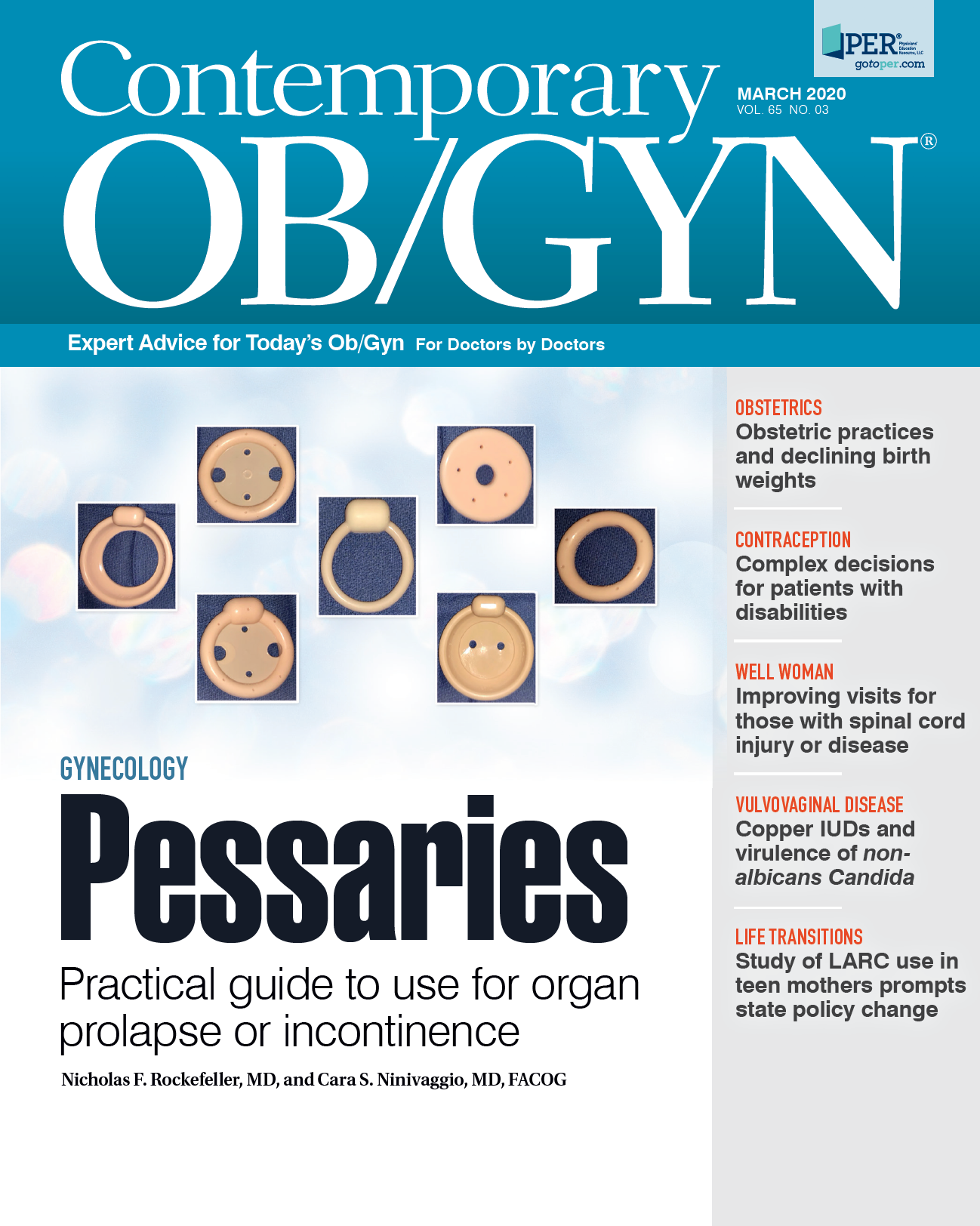Study of LARC use in teen mothers prompts state policy change
Read about the impact when long-acting reversible contraception (LARC) was offered to teenage mothers prior to hospital discharge.
When long-acting reversible contraception (LARC) was offered to teenage mothers prior to hospital discharge, it drastically reduced the rate of rapid repeat pregnancy (a subsequent pregnancy within 12 to 18 months) compared to other methods, according to a study of adolescents in the state of Indiana.
Data from the study prompted an Indiana state policy change in insurance reimbursement to improve statewide contraception access for all women.
Principal investigator Neena Qasba, an assistant professor of ob/gyn at the University of Massachusetts Medical School-Baystate in Springfield, noted that while she was an ob/gyn resident in training at Indiana University in Indianapolis in 2012, other states changed their state Medicaid policy to allow for intrauterine devices (IUDs) and implants to be inserted after childbirth.
“We advocated for this policy change in Indiana; however, state officials strongly desired local data,” Dr. Qasba told Contemporary OB/GYN. “We were able to present our data to advocate for access to these services statewide for all women.”
The authors used a retrospective cohort of 227 adolescents, aged 12 to 18, who gave birth in Indiana between 2010 and 2012. Rapid repeat pregnancy (RRP) rates within 12 months were 3.7% for women with etonogestrel (ENG) contraceptive implant, 22.6% for those with depot medroxyprogesterone acetate (DMPA) injection and 39.1% for those who selected short-acting methods (P = 0.01).
Adolescents who declined to choose an ENG contraceptive implant were significantly more likely to have an RRP compared to other contraceptive methods: adjusted odds ratio (aOR) = 11.8; 95% confi dence interval (CI): 2.74 to 110.3.
“Knowing how effective LARC is, the results of the study were fairly consistent with other similar studies,” said senior author Tracey Wilkinson, MD, MPH, an assistant professor of pediatrics at Indiana University School of Medicine. “However, we found that having local data were imperative to change policy within the state of Indiana.”
The insurance reimbursement policy change took effect in Indiana in 2015 and has since been further expanded to some private insurers within the state. “At the time of the study, this model of offering LARC prior to hospital discharge was not done, due to logistical payment issues on the part of insurance and hospitals,” Dr. Wilkinson told Contemporary OB/GYN, “But now all women in Indiana should have access to all forms of contraception, including LARC, prior to hospital discharge.”
"In fact, currently 40 states enable immediate postpartum LARC placement by unbundling this service from the delivery costs," said Dr. Wilkinson. To increase usage of any LARC and lower the incidence of RRP, “we recommend having discussions throughout pregnancy about plans for contraception after delivery and to ensure that whatever method is chosen is accessible to women prior to discharge,” Dr. Wilkinson said.
It is essential that women have access to all forms of contraception and evidence-based information on their effectiveness prior to making a decision, she said, as well as access to continued support if their decision changes.
However, currently in Indiana, Medicaid contraception coverage ends at 6 weeks postpartum, “which limits the time that many mothers have access to this type of care and thus puts limits on their decision-making when they have no other access after Medicaid stops,” Dr. Wilkinson said.
Reference
- Qasba NT, Stutsman JW, Weaver GE, et al. Informing policy change: A study of rapid repeat pregnancy in adolescents to increase access to immediate postpartum contracep-tion. J Womens Health. 2020. doi:10.1089/jwh.2019.8122
SKYLIGHT trials confirm safety and efficacy of fezolinetant against sleep disturbances
September 13th 2024At the 2024 Annual Meeting of The Menopause Society, the positive safety and efficacy data of fezolinetant against sleep disturbances from the SKYLIGHT 1 and 2 trials was presented.
Read More

